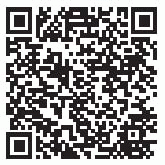Hemiparkinsonian Gait
OBJECTIVES
To recognize a typical case of hemiparkinsonism and distinguish it from the hemiparetic case reviewed in the prior case.
To highlight the importance of reaching the correct diagnosis for prompt initiation of appropriate therapy.
VIGNETTE
This 56-year-old woman complained of left arm pain and left shoulder pain for 11 years prior to this evaluation. Her left foot started to “stick up” about 5 years ago. For the last 2 years, she noted greater difficulty with walking and slowness, which forced her to walk “on the ball of her feet.” She had experienced no falls but felt as though her “weight shift” to the right made her stumble more often. She had also been more anxious and depressed, for which fluoxetine was prescribed to no avail. Recently, she noted a bit of tremor on the left hand when holding her arms outstretched. She admitted to mild hyposmia, occasional urinary frequency, and hot flashes, which she attributed to menopause.
 |
Our patient showed a left hemiparkinsonian gait, which has many of the attributes of the hemiparetic gait but a notable exception: the affected arm is extended, rather than flexed at the elbow, and there was no wrist flexion or thumb adduction. This patient was incorrectly suspected of having had a stroke. Instead, she had an asymmetric bradykinesia and rigidity (her right hemibody was not normal, despite her subjective perception), which had very slowly progressed over 10 years, with normal cognitive function and no atypical motor features aside from hyperreflexia. She also demonstrated the presence of a striatal toe, a spontaneous dorsiflexion of the first toe, which may be confused with the reflexive dorsiflexion of Babinski. These findings were most consistent with the diagnosis of Parkinson disease (PD), surprisingly benign given the lack of appropriate treatment over a decade. A genetic cause of her PD, likely parkin, was suspected given her relatively early age at onset (46 years), her hyperreflexia, and the report of PD in her father.
Stay updated, free articles. Join our Telegram channel

Full access? Get Clinical Tree








